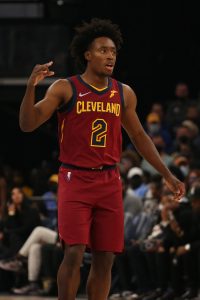The NBA’s rookie scale, which determines how much first-round picks earn during their first four NBA seasons, also dictates how much the qualifying offers will be worth for those players once they’re eligible for restricted free agency after year four. However, the value of those qualifying offers can fluctuate depending on whether or not a player has met the “starter criteria.”
Here’s how the starter criteria works:
A player who is eligible for restricted free agency is considered to have met the starter criteria if he plays at least 2,000 minutes or starts 41 games in the season before he reaches free agency.
A player can also meet the criteria if he averages either of those marks in the two seasons prior to his restricted free agency. Due to the fact that only 72 games were played in the 2020/21 season, these requirements have been slightly adjusted, but will return to normal next season.
A player’s ability or inability to meet the starter criteria impacts the value of the qualifying offer he receives as a restricted free agent, as follows:
 A top-14 pick who does not meet the starter criteria will receive a qualifying offer equal to the amount the 15th overall pick would receive if he signed for 120% of the rookie scale.
A top-14 pick who does not meet the starter criteria will receive a qualifying offer equal to the amount the 15th overall pick would receive if he signed for 120% of the rookie scale.
- Note: For the summer of 2022, the value of this QO will be $7,228,448.
- Example: Cavaliers guard Collin Sexton (2018’s No. 8 overall pick) won’t meet the starter criteria this season. As a result, he’ll be eligible for a QO worth $7,228,448 instead of $8,559,357.
- A player picked between 10th and 30th who meets the criteria will receive a qualifying offer equal to the amount the ninth overall pick would receive if he signed for 120% of the rookie scale.
- Note: For the summer of 2022, the value of this QO will be $7,921,300.
- Example: Hornets forward Miles Bridges (2018’s No. 12 overall pick) has met the starter criteria this season. As a result, he’ll be eligible for a QO worth $7,921,300 instead of $7,459,974.
- A second-round pick or undrafted player who meets the criteria will receive a qualifying offer equal to the amount the 21st overall pick would receive if he signed for 100% of the rookie scale.
- Note: For the summer of 2022, the value of this QO will be $4,869,012.
- Example: Thunder wing Luguentz Dort (an undrafted free agent) has met the starter criteria this season. As a result, he’ll be eligible for a QO worth $4,869,012 instead of $2,228,276 if Oklahoma City declines his team option to make him a restricted free agent.
- Note: For the summer of 2022, the value of this QO will be $4,869,012.
- For all other RFAs, the standard criteria determine the amounts of their qualifying offers.
Extending a qualifying offer to a player who is eligible for restricted free agency officially makes that player an RFA, ensuring that his team has the right of first refusal if he signs an offer sheet with another club. It also gives the player the option of signing that one-year QO.
Generally, the value of a restricted free agent’s qualifying offer isn’t hugely important, since very few RFAs accept those offers outright. There are exceptions though.
In 2020, for instance, Kris Dunn met the starter criteria, which ensured that his qualifying offer would have been worth $7,091,457 instead of $4,642,800. The Bulls opted not to extend that $7MM+ QO, making him an unrestricted free agent, and he ended up signing a two-year, $10MM contract with Atlanta. If Dunn hadn’t met the starter criteria, it’s possible Chicago would’ve been more comfortable issuing a $4.6MM qualifying offer, which would’ve significantly changed the way Dunn’s free agency played out.
We’ll revisit the starter criteria at season’s end to see which of 2022’s potential restricted free agents will have their qualifying offers impacted by meeting – or failing to meet – the starter criteria.
So far, of this year’s RFAs-to-be, Bridges, Dort (team option), Deandre Ayton, Mohamed Bamba, and Jae’Sean Tate (team option) have met the starter criteria. There are a few players who could still get there, led by Anfernee Simons, who has made 26 starts and logged 1,555 minutes.
Note: This is a Hoops Rumors Glossary entry. Our glossary posts will explain specific rules relating to trades, free agency, or other aspects of the NBA’s Collective Bargaining Agreement.
Information from Larry Coon’s Salary Cap FAQ and RealGM was used in the creation of this post. Earlier versions of this post were published in 2019 and 2020.
If there was a HR All Star Commenters team I’d definitely be a starter
Seems that COVID and a wave of injuries this year may elevate some offers a few years from now. Ayo Dosunmu (or Herb Kones) come to mind, for example. Do 2nd rounders have the same criteria?
Second-rounders are covered in one of the bullets above (they’re grouped in with UDFAs).
Thanks my reading comprehension has been diminished by pre Mardi Gras activities. 8)